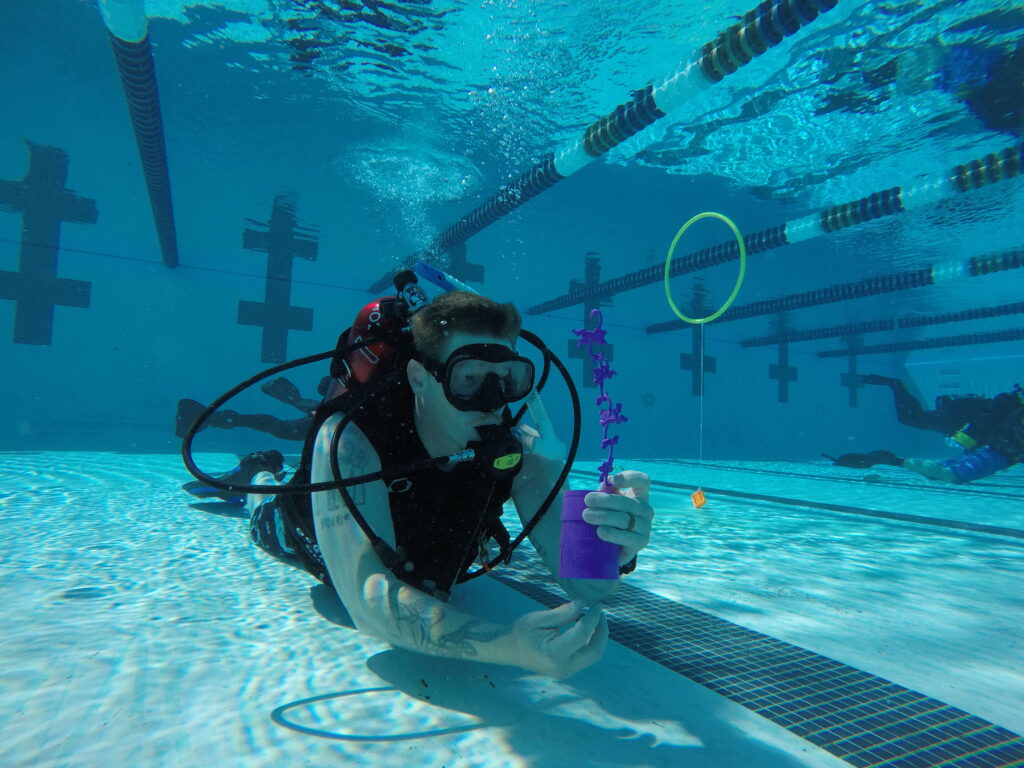Stop, Breath, Relax…
Occupational Therapists incorporate deep breathing exercises to help promote relaxation and coping techniques to help assist with keeping you centered and focused. Deep breathing is a great mindfulness technique to help with reducing stress and feelings of anxiety. OT’s can use these tools to help assist with self-regulation and resetting your fight or flight response, this can also reduce cortisol levels which is a hormone that is released during stressful events. Stress, can have huge implications on your body and immune systems which can leave you more susceptible to illness.
This is why it is important to try and take several breathing breaks throughout the day to help you stay refreshed and refocused. By taking time to either take deep breaths or paced breaths which usually consist of 4 second counts of inhaling followed by 4-6 counts exhaling, can help with putting your mind and body at ease.

These deep breathing techniques can also help with your scuba diving. Deep breathing exercises before a dive can help you feel more comfortable underwater, leading to a more relaxed and controlled breathing rate. A relaxed breathing rate can result in longer dive times.
If you experience exertion on a dive or feel yourself breathing at an irregular rate, simple breathing exercises can bring you back into focus. Stop, Breath, Relax! This allows you get your breathing back under control to continue your dive.
Incorporating both OT breathing techniques and scuba diving together can combine to help with reducing daily stress and feelings of sadness, as well as, anxiety that you may experience throughout your daily life.

Some easy Breathing exercises that you can incorporate into your pre-dive and daily routine are listed below.
Breathing Breaks:
- Stand and take a deep breath while raising your arms slowly over your head.
- Exhale as you lower your arms. Repeat 3 times
Paced Breathing:
- The basic technique is to inhale for a count of 2-4 seconds and exhale for a count of 4-6 seconds. Find the combination that works for you, making sure to exhale longer than you inhale.
- Focus your attention on a specific object, image, sound or even your breathing to free your mind from distractions.
- Begin by taking a normal breath and then take a deep breath. Breath in slowly through your nose, letting your chest and lower belly expand. Breath out slowly through your mouth, pursing your lips and making a swoosh sound.
- If your mind wanders, gently redirect your back to the counting and breathing.
Abdominal Breathing Technique:
- While sitting, with one hand on the chest and the other on the belly, take a deep breath in through the nose, ensuring the diaphragm (not chest) inflates with enough air to create a stretch in the lungs
- Exhale slowly through pursed lips. Initially repeat 3 times. You can work up to 6-10 deep, slow breaths per minute for 2-3 minutes.
4-4-8 Breathing:
- While sitting, breathe in through your nose for a count of 4, taking the breath into your stomach.
- Hold your breath for a count of 4.
- Release your breath through your mouth with whooshing sound for a count of 8.
- Without a break, breathe in again for a 4 count, repeating the entire technique 3-4 times in a row.
- Focus on counting when breathing in, holding the breath, and breathing out.
Simple Yoga Breathing:
- Sit or lie down comfortably, resting your hands below your navel.
- Tune in to the way you breath. Inhale and exhale naturally through your nose for a few minutes, noticing the slight rise and fall of your hands. Consider the way the air feels as it enters and exits your nostrils.
- Start to count silently forward (1,2,3…), then backwards (…3,2,1) as you breathe in and out.
- Gradually make each exhalation twice as long as each inhalation. Focus on breathing slowly and smoothly, humming each time you exhale.
Breathing Exercises provided by uhs.berkeley.edu/bewellatwork



